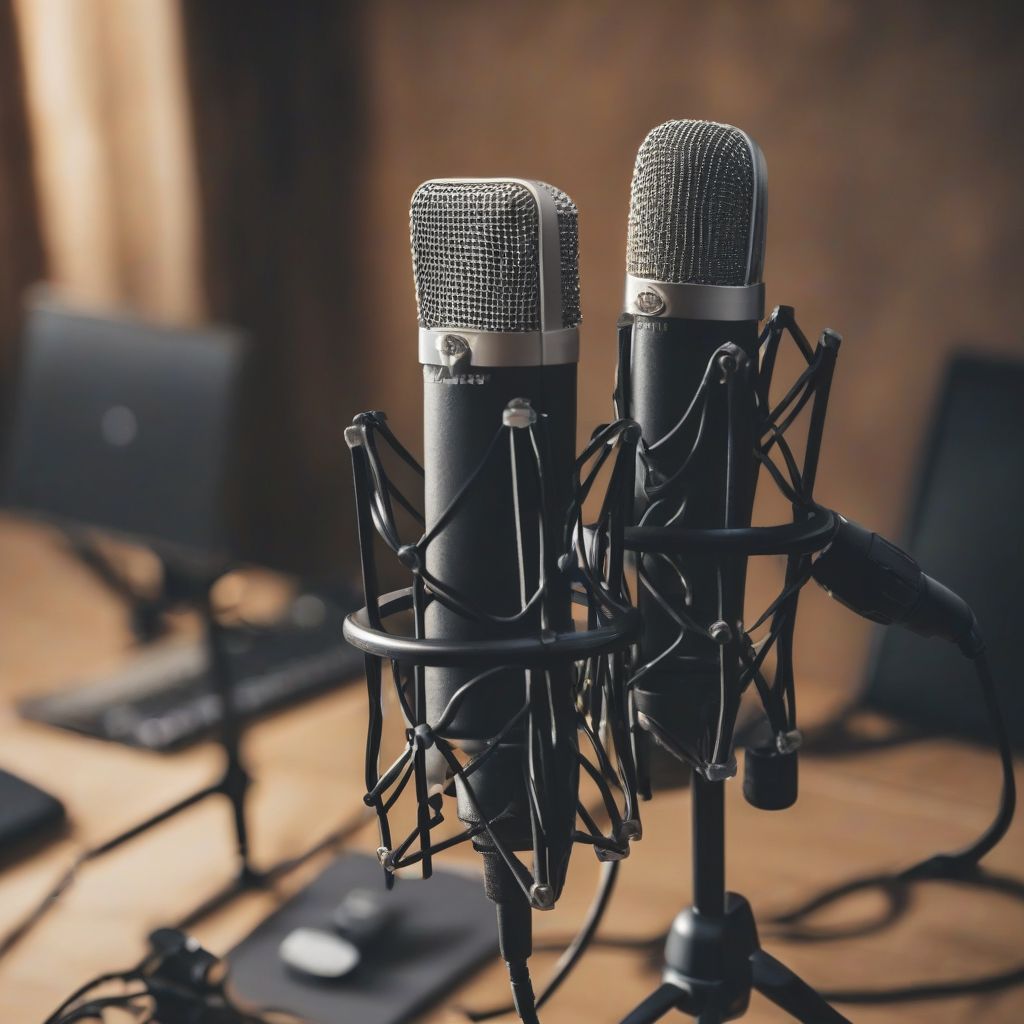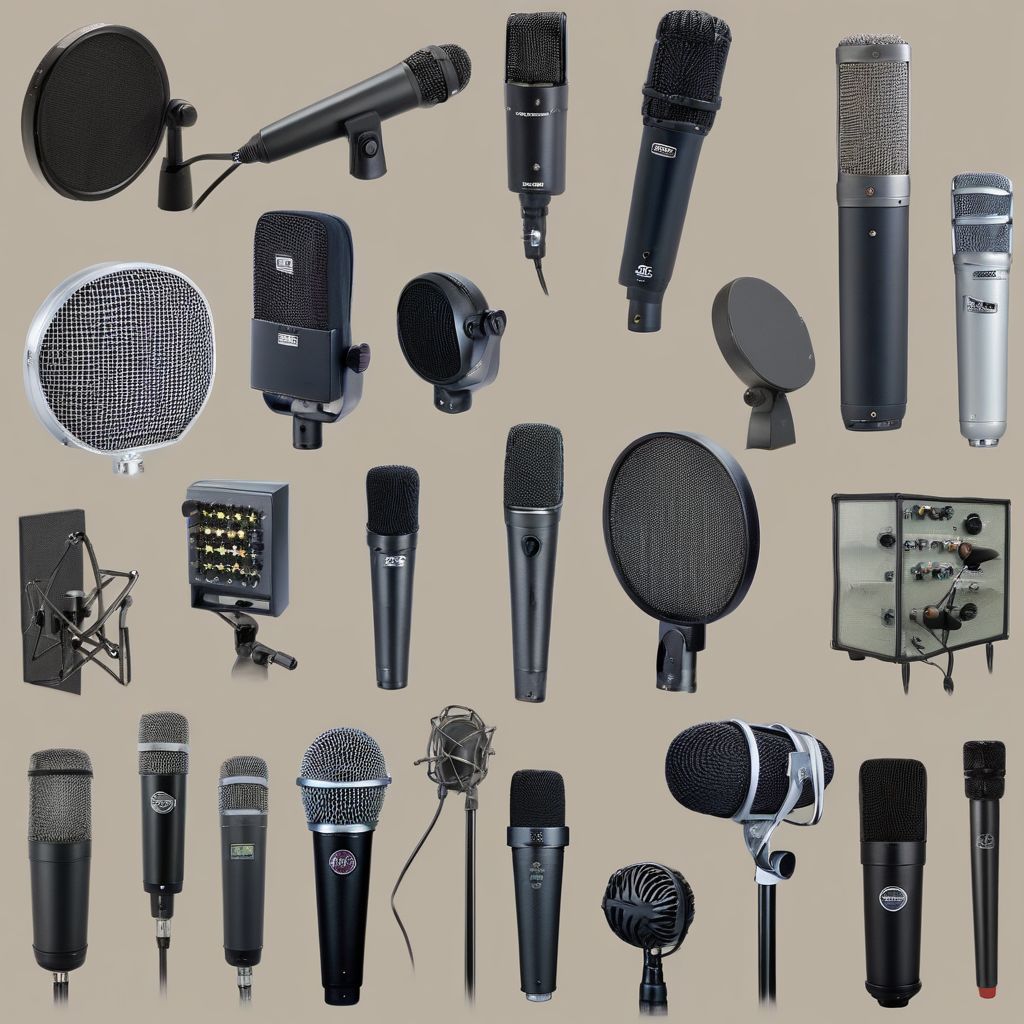Ever dream of recording crystal-clear audio from the comfort of your own home? Whether you’re starting a podcast, producing music, or narrating audiobooks, the right microphone is your key to professional-sounding recordings.
Choosing a microphone can feel overwhelming with all the technical jargon and options available. But don’t worry! This guide simplifies everything, providing you with the knowledge to confidently choose the perfect microphone for your home studio needs.
Understanding the Basics: Microphone Types
Before diving into specific features, it’s crucial to understand the two main microphone types:
1. Dynamic Microphones
How they work: Dynamic microphones use a simple yet effective design. Sound waves vibrate a small diaphragm connected to a coil within a magnetic field, generating an electrical signal.
Pros:
- Durability: Known for their ruggedness, making them ideal for live performances and handling less-than-ideal recording environments.
- Affordability: Generally less expensive than condenser microphones.
- High sound pressure level (SPL) handling: Can handle loud sounds without distortion, perfect for recording drums or amplified instruments.
Cons:
- Less sensitive: May not capture subtle nuances as well as condenser microphones.
- Frequency response limitations: Might not reproduce a wide frequency range, making them less suitable for recording vocals or instruments requiring detailed high-end frequencies.
2. Condenser Microphones
How they work: Condenser microphones use a thin, electrically charged diaphragm and a backplate to create a capacitor. Sound waves vibrate the diaphragm, changing the capacitance and producing an electrical signal.
Pros:
- High sensitivity: Capture a wider range of frequencies with incredible detail, ideal for vocals, acoustic instruments, and capturing subtle sounds.
- Wide frequency response: Produce a more accurate and detailed representation of the original sound.
Cons:
- Fragility: More delicate than dynamic microphones, requiring careful handling.
- Price: Generally more expensive than dynamic microphones.
- Power requirements: Typically require external power, often supplied through “phantom power” from an audio interface.
 Different Types of Microphones for Home Studio
Different Types of Microphones for Home Studio
Factors to Consider When Choosing a Microphone
Now that you understand the basic microphone types, let’s explore the essential factors to consider:
1. Polar Patterns: Dictating Sound Direction
A microphone’s polar pattern determines its sensitivity to sound from different directions. Here are the most common polar patterns:
- Cardioid: Records sound primarily from the front, minimizing background noise. Ideal for solo vocals, podcasts, and instruments.
- Omnidirectional: Captures sound equally from all directions. Suitable for recording ambient sounds, group vocals, or capturing the natural ambience of a room.
- Bidirectional (Figure-8): Picks up sound from the front and rear while rejecting sounds from the sides. Useful for interviews, duets, or recording instruments with a distinct sound from both the front and back.
2. Frequency Response: Capturing the Full Spectrum
Frequency response refers to the range of frequencies a microphone can accurately capture. The human hearing range is typically between 20Hz to 20kHz.
- Flat frequency response: Reproduces all frequencies evenly, ideal for accurate recordings.
- Shaped frequency response: Emphasizes or attenuates specific frequencies, often used to enhance certain instruments or vocals.
Consider the sound source you’ll be recording and choose a microphone with a frequency response that complements it.
3. Connectivity: Bridging the Gap to Your Computer
- XLR: The industry-standard connection, offering balanced audio for professional-quality recordings. Requires an audio interface to connect to a computer.
- USB: Offers plug-and-play convenience, connecting directly to your computer. Suitable for beginners or those seeking a straightforward setup.
Consider your existing equipment and desired level of audio quality when choosing a connection type.
4. Budget: Investing Wisely
Microphones come at various price points, ranging from affordable options for beginners to high-end professional models. Set a realistic budget that aligns with your needs and recording goals. Remember, investing in a quality microphone can significantly impact the quality of your recordings.
 Best Budget Microphones for Home Studio
Best Budget Microphones for Home Studio
Matching Your Microphone to Your Needs
Choosing the right microphone depends on your specific recording needs. Here are some common scenarios and recommended microphone types:
Podcasting and Voice-Overs:
- USB Condenser Microphone: Offers excellent clarity and ease of use for solo recordings.
- Dynamic Microphone: Provides durability and minimizes background noise, perfect for less-controlled recording environments.
Music Production:
- Condenser Microphone (Large-Diaphragm): Ideal for capturing rich, detailed vocals and acoustic instruments.
- Dynamic Microphone: Suitable for recording drums, electric guitars, and other loud instruments.
Streaming and Gaming:
- USB Condenser Microphone: Offers clear audio and convenient connectivity for live streaming.
- Gaming Headset with Microphone: Provides a combination of headphones and a microphone, ideal for communication and immersion.
Setting Yourself Up for Success: Accessories and Tips
Once you’ve chosen your microphone, consider these essential accessories:
- Pop Filter: Reduces plosives (harsh “p” and “b” sounds) for cleaner vocal recordings.
- Shock Mount: Isolates the microphone from vibrations, minimizing unwanted noise.
- Microphone Stand: Provides stable positioning for optimal recording.
- Audio Interface (for XLR microphones): Converts analog audio signals to digital, allowing connection to your computer.
Additional Tips:
- Treat Your Room: Minimize reflections and echoes by using acoustic panels or strategically placing furniture.
- Experiment with Microphone Placement: Find the sweet spot that captures the best sound from your source.
- Learn Basic Audio Editing: Enhance your recordings with simple editing techniques to remove background noise and improve clarity.
Conclusion
Choosing the right microphone for your home studio doesn’t have to be daunting. By understanding the different types, considering your specific needs, and investing in the right equipment, you can unlock professional-sounding audio and bring your creative visions to life.
Remember, there’s no one-size-fits-all solution. Experiment, explore different options, and have fun finding the perfect microphone that empowers your recording journey!
Ready to start recording? Share your home studio setup or ask any questions you have in the comments below. Let’s create amazing audio together!
[amazon bestseller=”usb microphones”]
